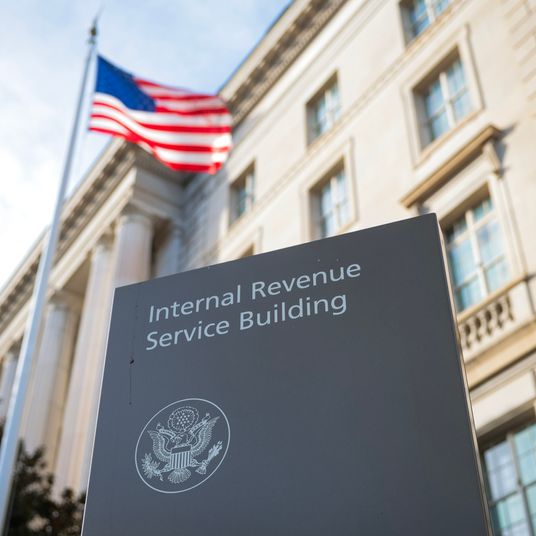
For all the extraordinary upheaval Donald Trump promises for America — mass deportations, mass layoffs of federal employees, the revoking of birthright citizenship — we will start to learn, in the coming months, how effective he’ll really be. Executive orders can be rescinded by later administrations, or get snagged in the courts, as has already happened over the past month. Yes, Trump can inflict tangible pain by himself. But becoming a dictator is easier said than done, even with the DOGE boys sowing chaos at the Treasury and IRS.
In Congress, Trump will have his chance to go much bigger. It’s there where his greatest ambitions, if he rounds up the votes, can become laws — which, unlike executive actions, are very difficult to undo. Joe Biden did not unravel Trump’s corporate tax cuts or save affluent households in the Northeast from the tighter SALT (state and local taxes) cap. Trump, in turn, will strain to do significant damage to the industrial policy Biden set into motion under the Inflation Reduction Act. If social conservatives ever felt they wanted to try to outlaw same-sex marriage again, they’d need to jam new legislation through Congress. Other than stacking the courts, leaving a policy legacy at the federal level means passing enormous omnibus legislation when your party is in power and daring rival successors to reverse it all.
When Trump turns his attention to legislation, what comes out of his administration might be, by modern Republican standards, rather conventional. On the agenda will be vicious attacks on the social safety net, the likes of which were waged, with limited success, in Trump’s first term. This is Trump’s version of populism; while he does not, like past Republican standard-bearers, want to privatize Social Security or gut Medicare, he is happy to aim at slashing other programs that the working class and poor rely upon.
It’s the House that will decide the fate of Trump’s legislative ambitions. Republicans have their smallest majority there since 1931, and Speaker Mike Johnson may only be able to spare a single vote. The majority itself is fractious, a mix of hard-right fiscal conservatives who’ve sought to topple Johnson and a small but influential number of moderates who carried swing districts. For many Republicans, aggressively reducing spending is the watchword, and that will carry with it especially destructive goals: bleeding out Medicaid with up to $2 trillion in reductions; slashing student-loan aid; cutting $250 billion from food stamps. The idea, in essence, is to balance out tax cuts for the rich by punishing the poor. MAGA and Reaganomics aren’t so different here.
Several days ago, Johnson got the House Budget Committee to approve a resolution that will allow the House to vote on a bill to address Trump’s aspirations for the border, energy, and taxes. The Senate, unlike the House, wants to advance two separate bills rather than one, and the government could be shut down in a month if Congress can’t agree. The Senate, with its 53-member Republican majority, has far more leeway to back social safety nets and tax cuts than the House, where relative moderates in swing districts, like Mike Lawler in the Hudson Valley, may balk at any reconciliation bill that does significant damage to Medicaid or SNAP. Lawler wants to run for governor against Kathy Hochul next year, and the House bill that conservatives long for could do significant damage to his political prospects. Lawler would like to join suburban Democrats in getting Trump to lift the SALT cap, which the president imposed in 2017. Trump has signaled he is open to a SALT compromise, if conservatives in rural states still do not want to bail out the higher-tax states in the Northeast. Some progressive Democrats are fine with the SALT cap, too.
Republican leaders are now privately considering a continuing resolution to fund the government at current levels through the end of the fiscal year, along with wildfire aid and other provisions, according to Politico. To do this, the GOP would probably have to get the Democrats to play ball. So far, none of the Democratic leaders are eager to bail out Republicans if they can’t pass reconciliation legislation along a party-line vote or hunt up support for a stopgap bill.
This is the strange state of play. Trump, through the executive branch, is trying his hardest, legally and illegally, to run roughshod over the government, but Congress is still there. It’s not clear whether he actually cares about gutting Medicaid, lowering the deficit, or even bailing out corporations further. That, unlike something like seizing Greenland, is less interesting to him. Slashing and burning welfare programs has always been the prerogative of the career Republican and Clintonian Democrat. Still, Trump proved during his first term he could be a useful idiot for tax-cutting, corporate-friendly Republicans. The same might be true again.
Many questions remain. Can Johnson get any reconciliation bill through the House, and if so, what will it look like? What will the few but crucial Republican moderates do — those with all the clout and everything to lose from legislation that punishes their constituents? How much pressure can Trump truly apply? What will Medicaid look like a year from now — and will Republicans unite, somehow, to eviscerate health care for the poor? The most vulnerable Americans will have to wait and see. They can be hopeful, at least, that Johnson will have to struggle to fulfill his austerity mandate. He is counting every last precious vote.
More From This Series
- Hochul Announces She Won’t Remove Adams, Yet: Live Updates
- Republicans Put MAGA Conspiracy Theorist in Charge of FBI
- Trump’s Poll Numbers Are Falling and Could Collapse Over Inflation




























